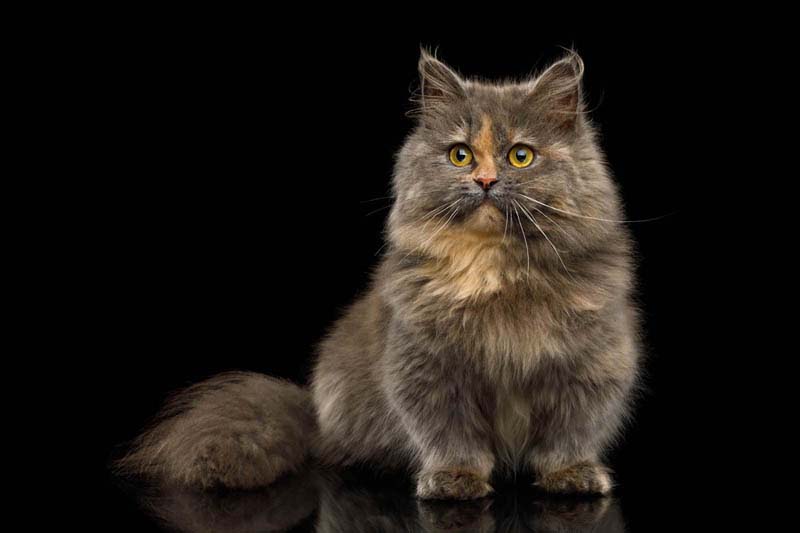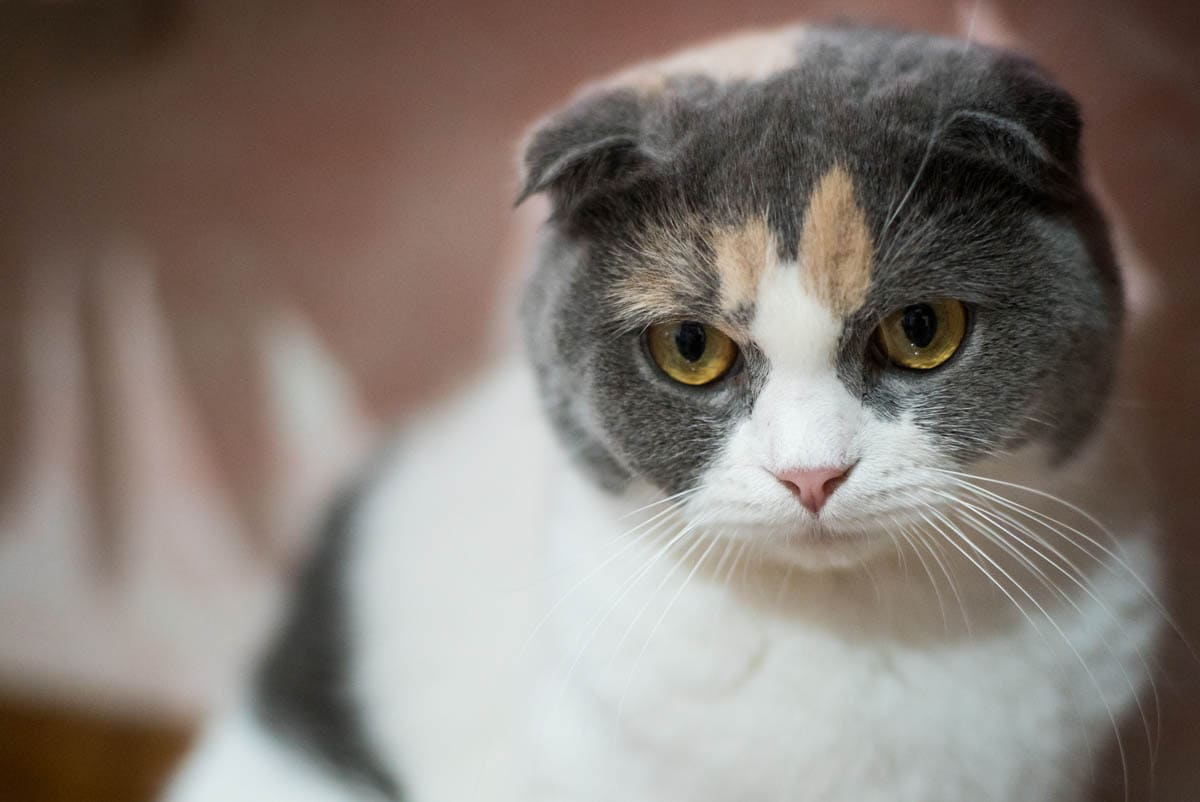What is a grey calico cat?
Also known as a muted or dilute calico, a grey calico cat is a type of coat color and pattern which consists of grey and cream markings on a white background. This unusual combination is the dilute form of the more traditional black, red and white calico.
Grey calicos owe their paler colours to the dilute gene which as the name suggests, dilutes the full-color version.
- Black becomes grey (blue)
- Red becomes cream
- Chocolate becomes lilac (lavender)
- Light brown becomes fawn
What is dilution?
The cat inherits two copies (versions) of each gene (known as alleles), one from each parent. A gene can be dominant or recessive. If each copy is different, the dominant gene will be expressed over the other. The cat must inherit two copies of a non-dominant gene for it to be expressed.
Dilution is due to a single base deletion 1 bp in the melanophilin (MLPH) gene which provides instructions for making melanophilin, a carrier protein that is found in the pigment-producing melanocytes. This protein is essential for the even distribution, transport, and translocation of pigment granules. Menalocytes are specialised cells that contain organelles known as melosomes. Melanosomes synthesise, store and transport melanin out of the cell via the dendrites to neighbouring keratinocytes (keratin producing cells).
In the dilute cat, melanin synthesis is normal, but the pigment granules are enlarged and deposited into the hair shaft unevenly, some areas will contain clumps of pigment granules while other parts of the hair contain none.
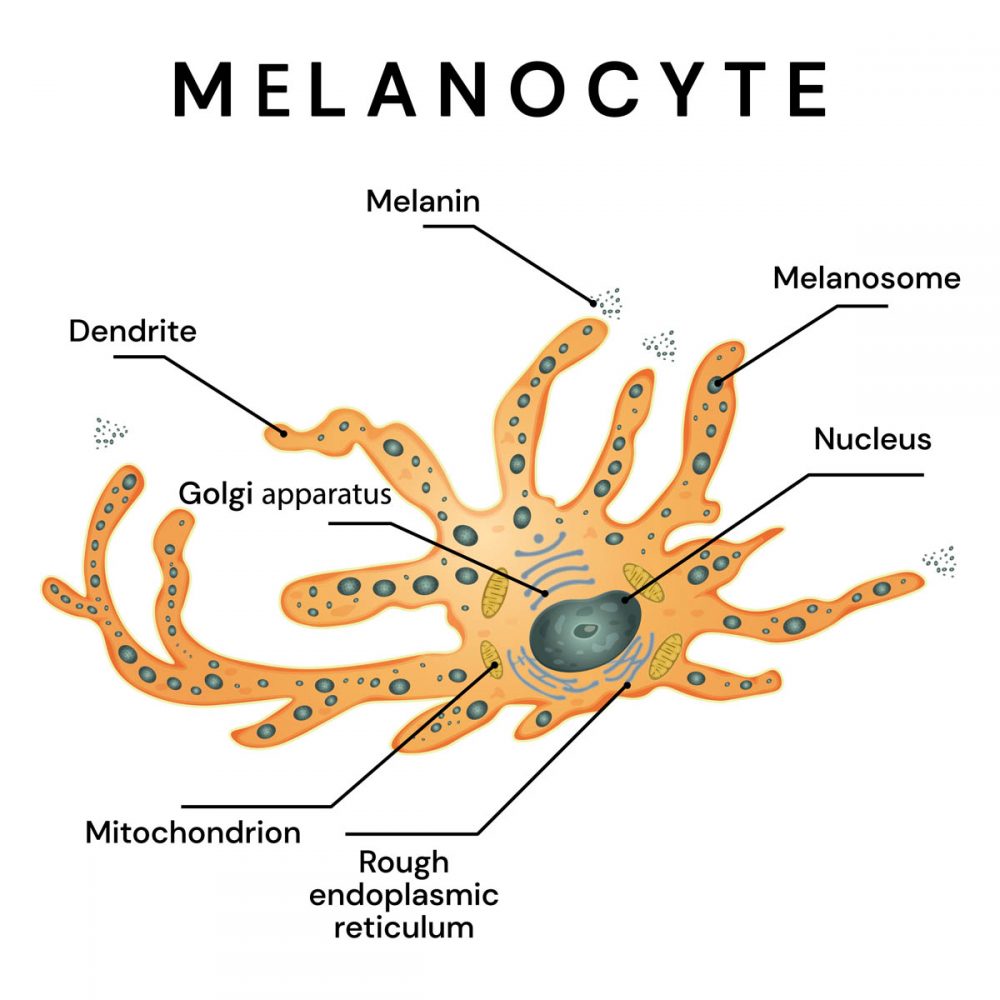
Mode of inheritance
The dilute gene is autosomal recessive to non-dilute (dense colour), this means the cat must inherit two copies of the dilute gene (one from each parent) to show the dilute coat colour.
| Dense | Dilute |
| Black | Blue (silver) |
| Chocolate (brown) | Lilac |
| Cinnamon | Fawn |
| Red | Cream |
Genotypes
- DD (Heterozygous – Full colour) – The DD cat is full colour and cannot pass on a copy of the dilute (d) gene to offspring.
- Dd (Homozygous – Full colour, carries dilute) – The Dd cat is full colour, but has one copy of the dilute (d) gene.
- dd (Heterozygous – Dilute) – The dd cat is dilute but can produce full-colour kittens if it mates with a cat carrying at least one copy of the dense (D) gene.
Possible outcomes between different matings:
The Punnett squares below show what would happen between different matings with an average litter of four kittens.
- Phenotype: Both parents are dense.
- Genotype: Both parents carry two copies of the dense gene (homozygous). DD x DD.

Outcome: All offspring are homozygous for dense, and cannot pass on the dilute gene.
- Phenotype: Both parents are dense.
- Genotype: One parent carries two copies of the dense gene (homozygous), and one parent carries one copy of the dense gene and one copy of the dilute gene. DD x Dd.

Outcome: All offspring are dense, two are homozygous and cannot pass on the dilute gene, two carry the dilute gene, which they can pass on if they mate with a cat who also carries the dilute gene. DD, Dd.
- Phenotype: Both parents are homozygous dilute.
- Genotype: Both parents are homozygous dilute. dd x dd.

Outcome: All offspring will are dilute. dd.
- Phenotype: Both parents are dense, but carry one copy of the dense gene, and one copy of the dilute gene (heterozygous).
- Genotype: Both parents are heterozygous, carrying one copy of the dense gene and one copy of the dilute gene. Dd x Dd.
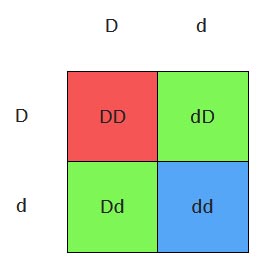
Outcome: One kitten is homozygous dense, two kittens are heterozygous dense and carry the dilute gene, and one kitten is homozygous dilute. DD, Dd, dd.
- Phenotype: One parent is dense and one parent is dilute.
- Genotype: One parent is dense, carrying dilute and one parent is dilute. Dd x dd.
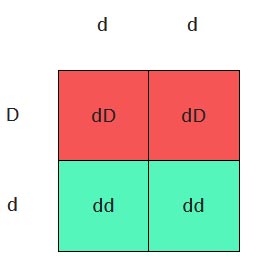
Outcome: Two kittens are dense but carry dilute, two kittens are dilute. Dd, dd.
- Phenotype: One parent is dense, and one parent is dilute.
- Genotype: One parent is homozygous dense, and one parent is homozygous dilute. DD x dd.

Outcome: All offspring are dense, but carry dilute (heterozygous). Dd.
Frequently asked questions
Are grey calico cats rare?
Grey calico cats are less common than the traditional black, red and white calico, but they are not rare.
What do you call a grey calico?
Just that, a grey calico or a dilute calico.
What cat breed is a grey calico?
Calico is not a breed, but a coat colour and pattern which occurs in both purebred and mixed-breed cats (domestic shorthair and domestic longhair).
Breeds which allow dilute calicos include:
- American Wirehair
- Cornish Rex
- Devon Rex
- Exotic shorthair
- LaPerm
- Maine Coon
- Munchkin
- Norwegian Forest Cat
- Persian
- Scottish Fold
- Sphynx
How much is a grey calico cat worth?
While the grey calico colour/pattern is less common than other colours, it doesn’t change the price of a cat. Mixed breed grey calico cats are generally less expensive than purebred grey calicos.
Are there male grey calicos?
Male calicos are rare as the orange gene is located on the X chromosome. The male has one X (and one Y), and will therefore be orange or black. The female has two X chromosomes, so if she inherits black and orange, both colours will be visible.
The incidence of male calicos is reported to be 1 in 3,000 and is usually associated with Klinefelter syndrome.
Is there such a thing as a grey tortoiseshell?
A tortoiseshell cat’s coat consists of two colours, black and red, brown and red or the dilute version of grey (blue) and cream. By contrast, the calico is three colours, due to the addition of the white spotting gene which results in patches of white.
